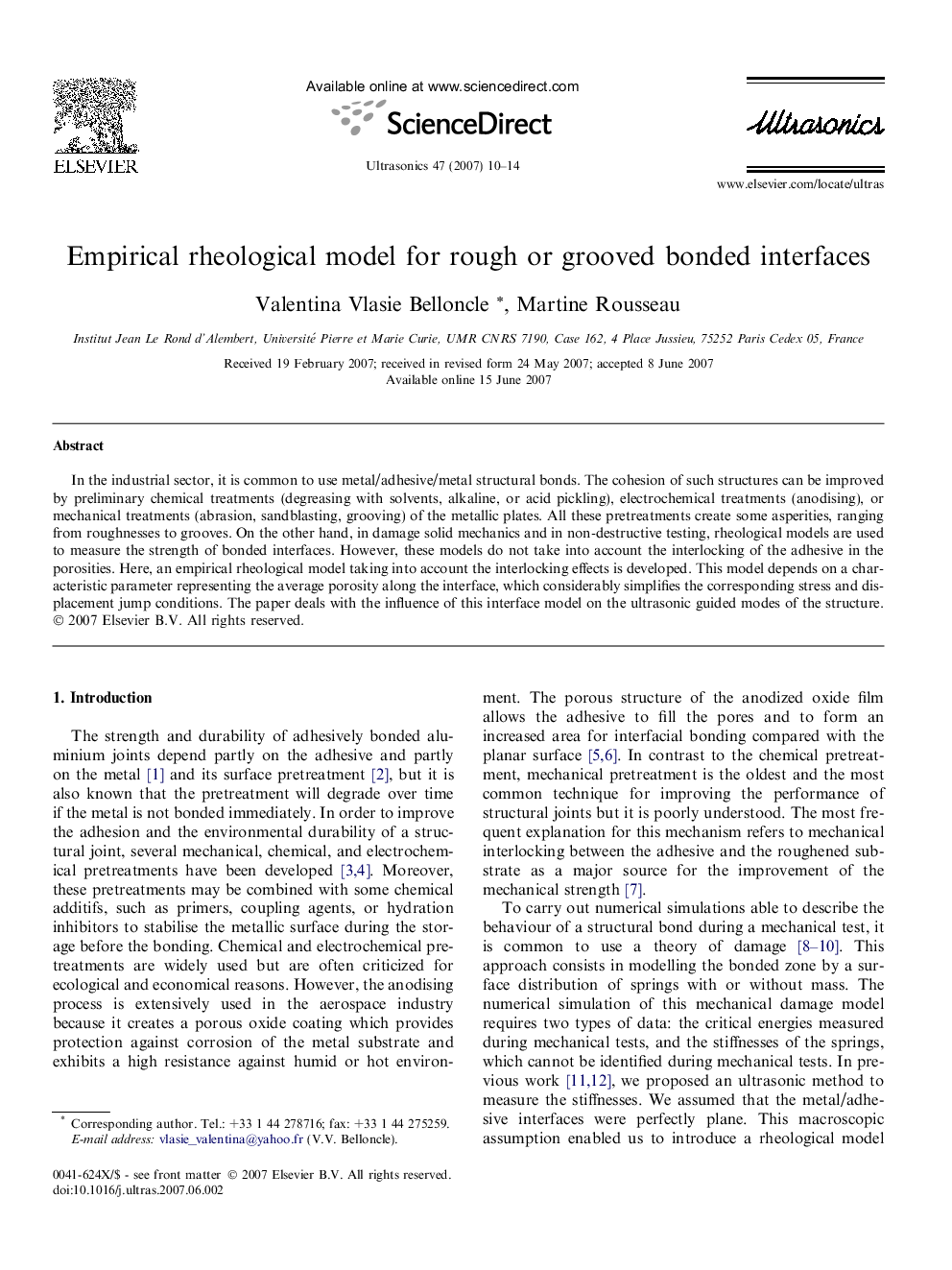| Article ID | Journal | Published Year | Pages | File Type |
|---|---|---|---|---|
| 1759240 | Ultrasonics | 2007 | 5 Pages |
In the industrial sector, it is common to use metal/adhesive/metal structural bonds. The cohesion of such structures can be improved by preliminary chemical treatments (degreasing with solvents, alkaline, or acid pickling), electrochemical treatments (anodising), or mechanical treatments (abrasion, sandblasting, grooving) of the metallic plates. All these pretreatments create some asperities, ranging from roughnesses to grooves. On the other hand, in damage solid mechanics and in non-destructive testing, rheological models are used to measure the strength of bonded interfaces. However, these models do not take into account the interlocking of the adhesive in the porosities. Here, an empirical rheological model taking into account the interlocking effects is developed. This model depends on a characteristic parameter representing the average porosity along the interface, which considerably simplifies the corresponding stress and displacement jump conditions. The paper deals with the influence of this interface model on the ultrasonic guided modes of the structure.
